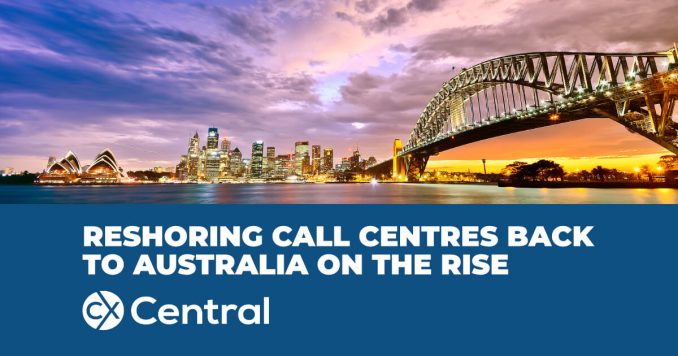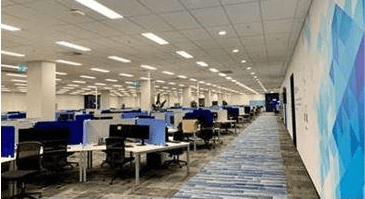
Is call centre reshoring the new trend?
Derek Finch looks at how reshoring and recent changes to Call Centre Outsourcing driven by COVID 19 are changing the Australian call centre industry landscape.
For years the discussion over onshore or offshore has been going on.
Driven by the need to cut costs India became the new go-to place.
Some bad experiences and rising costs meant a move to the Philippines where English was spoken well, subsidies were available and costs still low.
Then followed other locations like South Africa, Fiji and Malaysia.
So what is behind the increasing popularity of companies looking at reshoring call centres back to home soil?
Why overseas call centres are not working
However much these offshore destinations offered reduced operational costs and popularity with senior executives, there has always been reticence from the Australian public.
Sometimes it was just the accent making the agent difficult to understand although voice training and recruitment have almost eradicated that issue.
However, there were other issues in taking centres offshore.
The culture of the country for a start.
I know of a fundraising organisation using an offshore centre whereafter any donation, the call was transferred to a team leader to say thank you ….. Lovely touch but usually the caller just wanted to get off the call not hang on and extend the call further!
Then there was the heavy reliance on scripting with agents told not to deviate … and an Aussie at the end of the phone screaming ‘just listen to me!!!!!’
There was also a lack of training, communication issues from Australia to the location and also the distance in management input.
I could go on…
Access Economics report on Nearshoring in 2008 showed that by the time ALL costs were factored in (travel of trainers and managers to the site, lost business, increased meeting etc.) the cost of an offshore centre was comparable to an onshore centre in a regional area (regional Australia like Tasmania or Adelaide or even New Zealand).
But still offshore continued to grow with major companies like Telstra and Optus growing their offshore capacity.
At one organisation the rule was for each onshore job eradicated permitted 1.5 offshore … then the manager had to ensure quality and performance but of course, was restricted in visiting or sending sufficient training resources.
I know when I was managing offshore teams I had a weekly teleconference and reports but the managers on-site would tell me what I wanted to hear and it was really hard to find out exactly what was going on – they just wanted to please and downplayed issues and, of course, I could not visit to see for myself!
Note – I am not complaining about offshoring.
It has its place and if well managed (and that’s my point – IF) then they can be not only cost-effective but customer effective.
Cheaper sounds good but is not always better – or cheaper!!!
Then came COVID19.
The impact of COVID-19 on call centres
Many offshore centres were closed or running at significantly reduced capacity.
Wait times for those organisations using offshore call centres went up as calls were diverted to the remaining onshore centres.
And even local companies with large call centres in big offices suddenly scrambled to enable work from home options for their employees.
The recent press release about the PROBE /Stellar merger referenced the recent trend of businesses reshoring call centres back to Australia as one of the drivers behind the merge with Probe CEO Andrew Hume citing “the Australian BPO market is expected to grow significantly in the coming years as companies plan to move outsourced services back onshore given disruptions in offshore markets.”
The ABC also recently reported Westpac are reshoring up to 1,000 jobs back to Australia and in August 2020 Telstra announced their intent to remove all offshore call centres roles and bring them back to Australia.
So while costs may be cut offshore, how cost-effective is it if you manage that arrangement effectively?
What other risks are there in putting more calls (and back-office functions) offshore?
These days being ‘remote’ is not an issue as technology allows communication – Work from home has never been so popular.
However, you need to build culture, teamwork, good training and good management aligned to the company culture.
Australian call centres again on the rise
Outsourcer Datacom has been ramping up its onshore capacity and opened 1200 seats in Adelaide a couple of years ago and has just announced another 650 at a second site.
As a technology company, they offer a raft of solutions including AI, virtual assistants and CX platforms, but recognise voice is still a central part of the solution and will remain so even if there is growth in web chat and self-help (how much does it annoy you that you deal with a company but when you have a real problem and need to talk they don’t list a phone number?!!!)
Interestingly, Serco has also recently established a centre in Adelaide.
Back to Datacom, who chose to open in Adelaide a couple of years ago.
Why? Did they foresee the shift in trend?
James Johnstone, Head of Commercial Strategy at Datacom, explained that when growing their base, they saw distinct advantages in going regional.
‘Obviously there are cheaper costs involved like office accommodation, and although salaries are generally lower in Adelaide we still pay the same rate nationally. We also look at the economic fundamentals of a community and how we might be able to contribute to that community. In recent years Adelaide has been impacted by higher unemployment as the economy has started transitioning from manufacturing to more knowledge-based roles. We had the opportunity to take on a number of great team members from Holden and Mitsubishi.’

They also established a good working relationship with TAFE SA, including ongoing training – better than they could arrange interstate, because SA is very focussed on job creation and readiness.
‘You get good quality candidates, lower attrition rates, and a greater willingness from government agencies, so it’s easier to do business’ said James.
‘With good communication, we can network sites easily so there is no need to have a centre close to senior management’ he added – something that has seen centres move out of Adelaide historically because the C Suite Execs in the head office wanted them close which is believed to be why Coca Cola moved a few years ago.
But what about work from home?
COVID-19 drove a massive growth in this space. While the tech providers are jumping up and down lauding its ease, it still does not sit easily with many.
Short term it worked, but permanently?
I certainly heard some horror stories about managing new agents and stats show less than a majority love it – and how many of those who love it do so because they can get away with less?
‘Work-from-Home, is a service offering that we provide our clients. However, it is very important to get the model right so it is sustainable with a focus on how we can continue to provide an engaging environment’ says James. ‘Technically it’s easy and the flexibility it can provide to scale rapidly is great. However, it comes down to what is the client looking to get out of the service and as a result Datacom has a few different approaches that it can offer when delivering a service in a work-from-home model.’ (For further reading in this issue read Tips from Working from Home Post COVID).
It’s not surprising that Outsourcers and big companies like Westpac are looking at reshoring.
Reliability, continuity and high service standards are driving change.
Datacom’s experience would seem to show that regional locations like Adelaide might benefit greatly from this new trend.
Search a list of contact centre outsourcers in Australia >>>
Further reading:


Be the first to comment